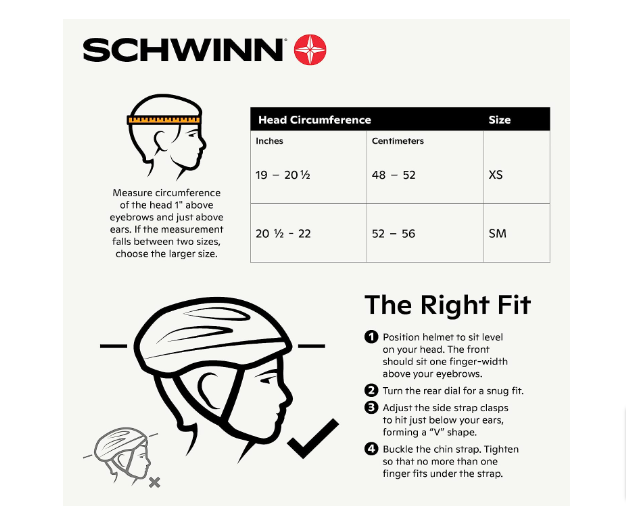Most parents want to know the proper kid’s bike helmet sizes to ensure their child’s safety. Without a good fit, it can’t protect your child’s head. To get an appropriate fit, knowing the proper helmet size is necessary. Deciding which kids’ helmets to choose can be difficult, but we’re here to help. This post will discuss how to measure your child’s head and the right size of your child’s helmet.
How to Measure a Baby’s Head Circumference?
Numbers tell the story. So, you should measure your child’s head circumference. You can measure your child’s head circumference with a soft and flexible tape measure. From above, the ear starts to measure.
And make sure this tape goes in a straight line across the forehead and back of the head. Thus, your head’s most significant part represents the greatest circumference. To know the measure, it’s best to measure several times.
Different Bike Helmet Sizes for Different age:
Just purchasing and don’t have a measuring tape on your hand? And also, do you want to know what size helmet you need for your child? The following can help you to give an idea.
Bike Helmet Size For a 9-Month-Old Baby:
The nine-month baby’s average head circumference is about 45 to 47 cm. Besides this, 1 to 1.5-year-old children’s average head circumference is 47 to 49 cm. A good child’s bike helmet size is 44 to 48 cm.
Bike Helmet Size for Children Aged 1.5 to 4 Years:
The average head circumference of 1.5 to 2-year-old children is 49 to 51 cm. For children aged 2 to 4 years, it is 51 to 53 cm. A 48 to 52-size children’s bike helmet size is a standard for most children in this age group.
5 Year Old Child Helmet Size
For four-year-old children, you should take a circumference greater than 53cm. Urban Eki has expanded its range with larger helmet sizes. These helmets are eligible for head circumferences of 51 to 54 cm.
How to Fit a Child’s Bike Helmet?
After choosing a unique size bike helmet, it must fit and adjust correctly. In fact, you also should ensure that the helmet fits on your little one’s back of the head. And then make sure there are no gaps on any side. Moreover, you should ensure your kid’s helmet won’t slide back and forth.
Now, starts fine-tuning in the fit. It usually works with a knob at the back. Turn the knob to ensure it doesn’t fall off the head. Still, you also make sure this helmet isn’t too tight. Finally, you can tie off the chin. And finally, confirm that it’s not too tight or too loose.
Final Word:
To conclude, this is the guide to finding the correct information on a kid’s bike helmet size. Using the right-sized helmet for your kids is necessary to ensure protection, comfort, and safety. Without color and style, you should emphasize the fit of the helmet. A properly fitting helmet ensures your kid’s head will not become injured.
